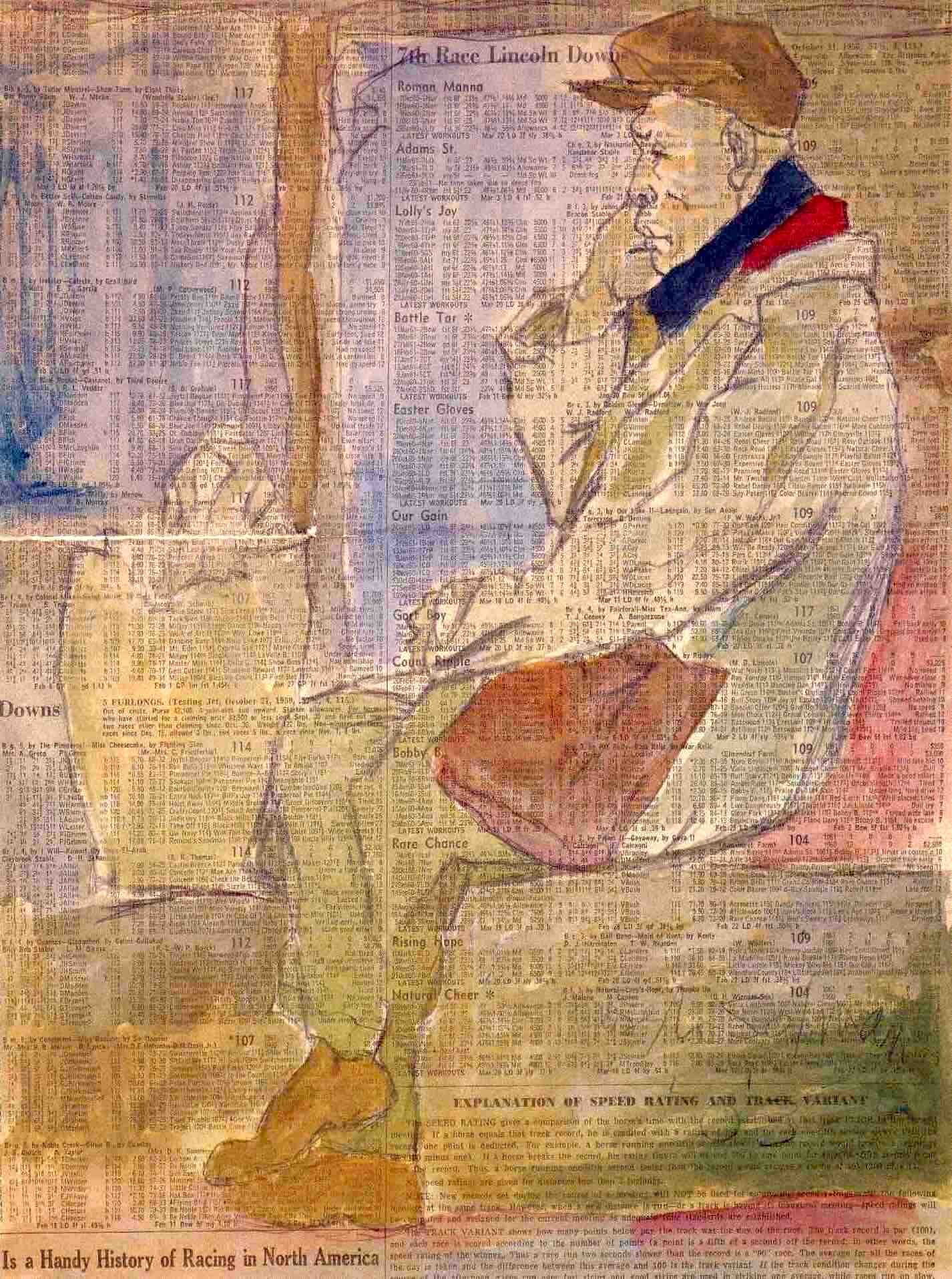Joseph Solman : subways
From a newspaper article, circa 1964…
Aqueduct Race Track, over-burdened these days by such crass chores as money-counting, paused long enough last week to “discover” an artist behind one of its $10-Win windows, loudly proclaim him, and hanging four of his watercolors on a clubhouse wall.
The pari-mutuel clerk – 55 year-old Joseph Solman – was appreciative, but not terribly impressed. In 1934 – some 25 years before the Big A opened – he had his first one-man show. Since then, his oils and water colors have been displayed in the Whitney Museum, the Phillips Collection in Washington, the Brandeis University Museum and the Hallmark Art Collection, as well as many private collections.
Three years ago he won a National Institute of Arts and Letters award.
“I started working at the race tracks as a stopgap, income-wise,” said Solman, in his East Village studio. “Jamaica, Belmont, then the season started to get longer, it helped me for a time to make a living without having to teach or do commercial art.”
Solman now works at the track only on Saturdays, to “keep up the union card.” This leaves him free to support a wife and two children by painting portraits, street scenes and studio interiors that have been well-received by art critics.
His discovery at Aqueduct began four years ago, on a subway ride out to the track. An interesting subject was sitting across the aisle, but Solman had left his sketchpad at home. Joe sketched – with a soft lead pencil – over the gray-white results tables in an issue of The Morning Telegraph. Later, admiring the effect, the softness of the paper, and the way he was able to avoid alerting subjects who thought he was doping out his bets, he began sketching every time he rode to work.
Then he began sketching colleagues at the track and painting from the sketches. Eventually, his superiors at Aqueduct saw his work and figured they had come upon that longest of long shots – an untutored pari-mutuel Picasso. Solman apparently did not disabuse them.
He does not, however, sketch while on duty (“the job demands intense concentration and you have to be at attention) and he has never sold or exhibited a painting of a horse (“I’m not quite sure that Degas hasn’t said everything that there is to be said about horses.”).













